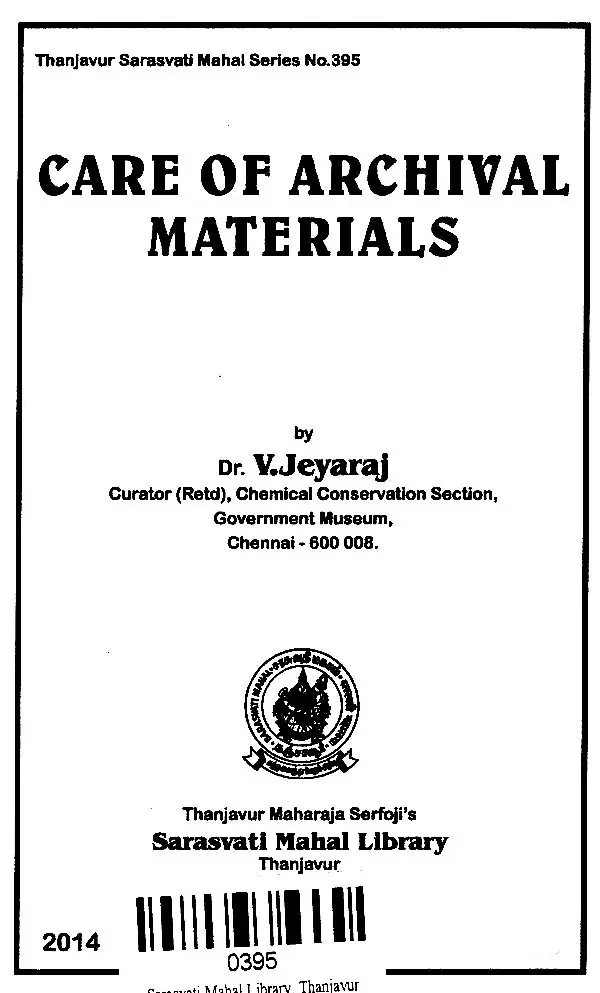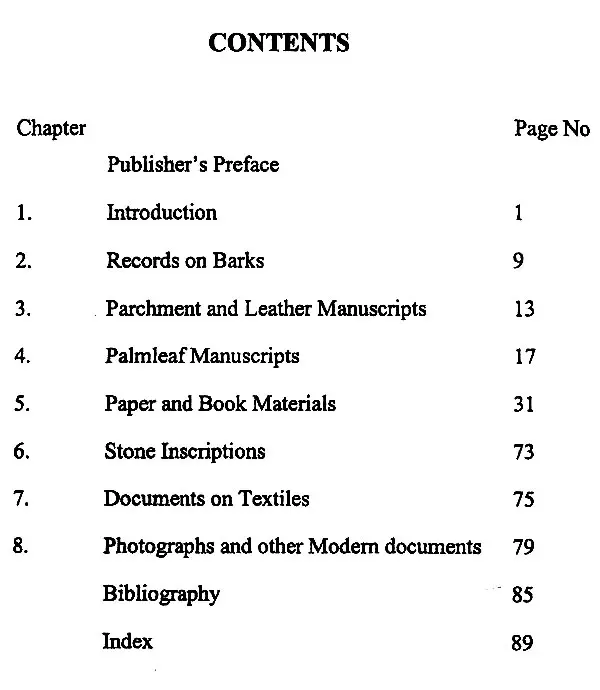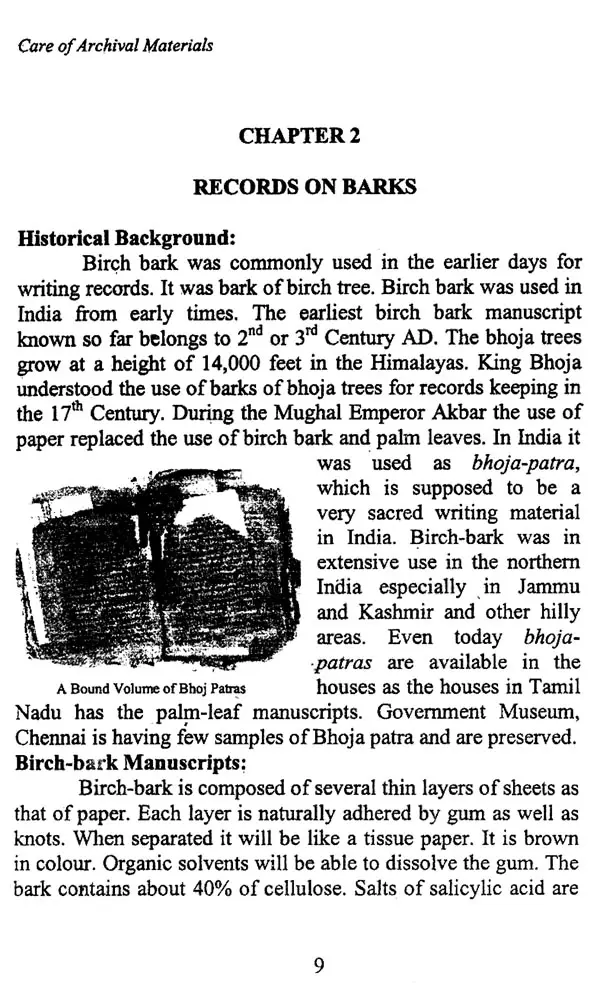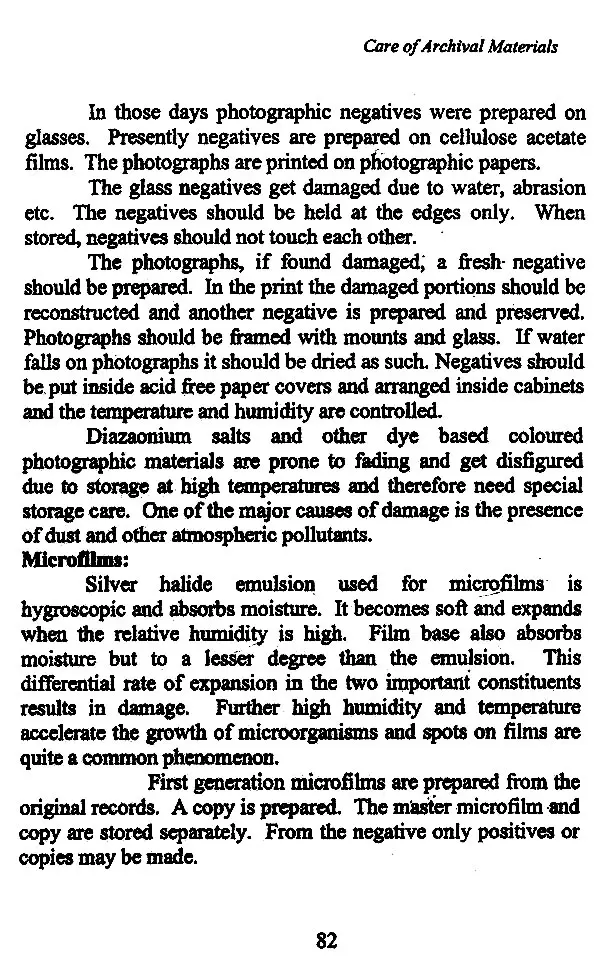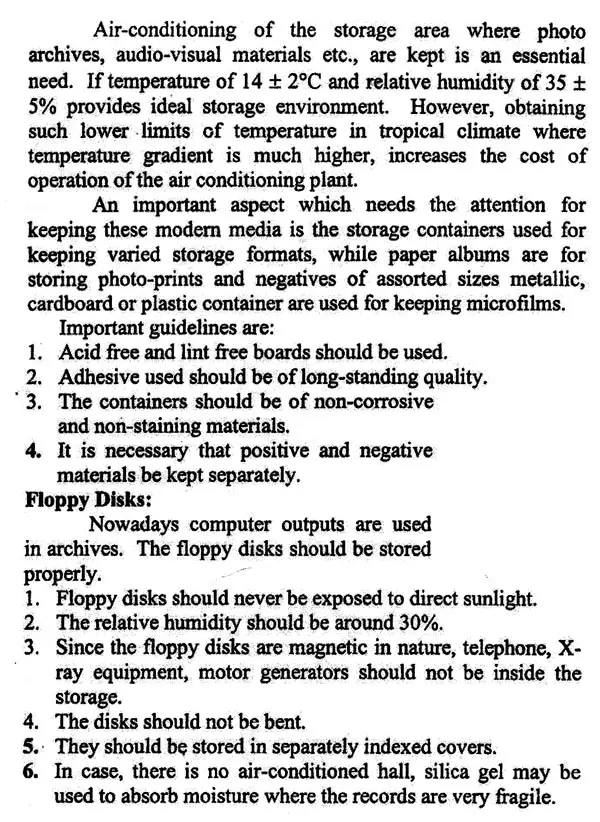
Care of Archival Materials
Book Specification
| Item Code: | UAF869 |
| Author: | V. Jeyaraj |
| Publisher: | SARASVATI MAHAL LIBRARY & RESEARCH CENTR |
| Language: | English |
| Edition: | 2014 |
| Pages: | 104 (Throughout B/W Illustrations) |
| Cover: | PAPERBACK |
| Other Details | 8.50 X 5.50 inch |
| Weight | 120 gm |
Book Description
Preservation and Conservation of rare Materials including manuscripts are vital to protect our knowledge treasure. Hundreds of years old materials with rare contact are to be protected / conserved to show case to the future generation and to the rest of the world for the inherent benefits they carry. Towards this direction Thanjavur Maharaja Serfoji's Sarasvati Mahal Library is taking various steps.
Recorded information’s on various materials starting from Inscriptions to Floppy disks are called Records of Archival materials. It is more important to preserve a record than to create the record. The place for storage of records is called Archives. This book entitled 'Care of Archival Materials' deals with the care and conservation of manuscripts, books, maps etc.,
All forms of direct or indirect action aimed at increasing the life expectancy of an undamaged and or damaged element of cultural property is termed as Conservation. Preventive conservation, Curative conservation and Restoration are the three stages of conservation and every archival material need its own way of conservation according to the degree of damage caused by various factors. Natural and human factors are responsible for the deterioration of an archival material. These damages can be controlled by proper handling and planning. Disseminating the knowledge of conservation to the human society is the only way for preserving the cultural property of any country. This book will serve that purpose and the people who are handling the archival materials will largely be benefitted. Dr. V. Jeyaraj, the Curator of Government Museum (Retd.), Chennai has accomplished the task of writing this book by his painstaking efforts. I thank the Editor for his good job.
I am thankful to Government for sanctioning funds for publishing the book.
I thank the Administrative Officer, Thiru M. Sankaranarayanan, B.A., Dr. S. Sudarshan, M.A., B.Lit., M.L.I.S, Ph.D., and Library staff for having taken sincere efforts to bring out the reprint.
This book will be very much useful to the research scholars and the students.
History of Archives:
Document is a record, which consists of information regarding administration, trade, etc. In the earlier days records were maintained in various ways.
From time immemorial terracotta (Babylonians), papyrus (Egyptians clay moulds (Harappans), bronze, bone, silk, wooden planks (Chinese) wooden planks (Osinians) palm leaves (south east Asians, Indians) had been used traditionally as the base for writing and the records were preserved. Bhoj patthar was used in the northern parts of India for writing purposes. Even today the barks of a particular tree is being used for writing purposes. Stone inscription is also a type of record available throughout the world. India especially Tamil Nadu is not an exception to this. In the later days paper is found much useful for making records.
Archives are institutions where records of the past and the present are preserved for posterity. The archives are of various types. The governments for the benefit of the people in the past established mostly the archives.
Museum is a non-profit making permanent institution in the services of the society and of its development and open to the public, which acquires, conserves, researches, communicates and exhibits for purposes of material evidence of man and his enjoyment.
Athenians preserved their documents in the temple of the Mother goddess around 5th and 4th Century BC. Roman Emperor Justinian (527-565AD) made arrangements for the construction of a building, an officer to be appointed to preserve them so that the records might not be damaged in the future. But, on 12th September 1796 as per the laws of the New French Government organized the archives in Paris to preserve the records of the Revolutionary Government. Later it was made as the French National Archives in 1796. In 1838, public records office was established at London in England.
